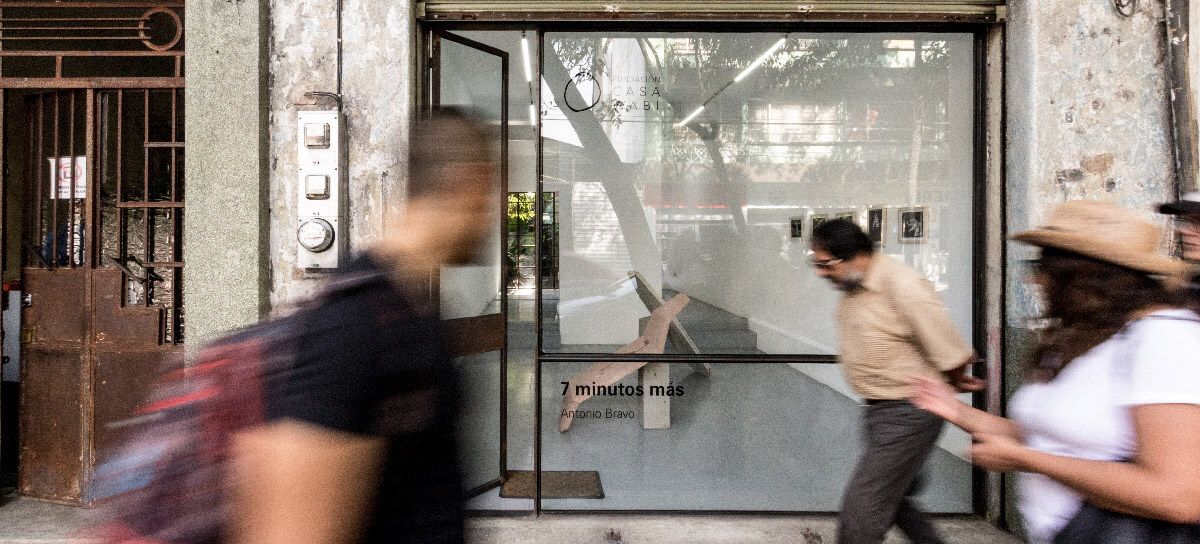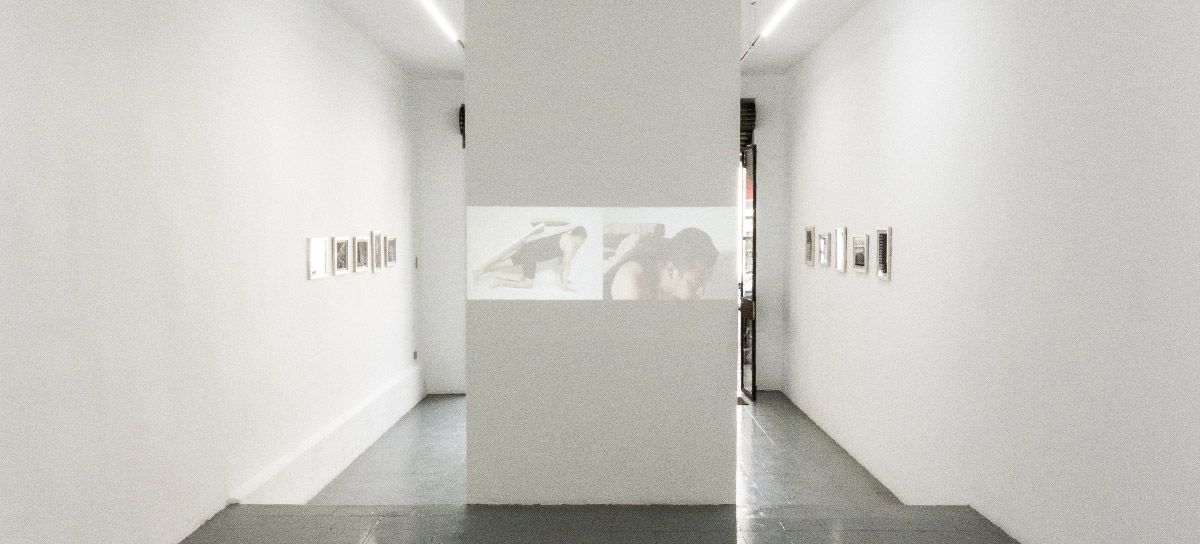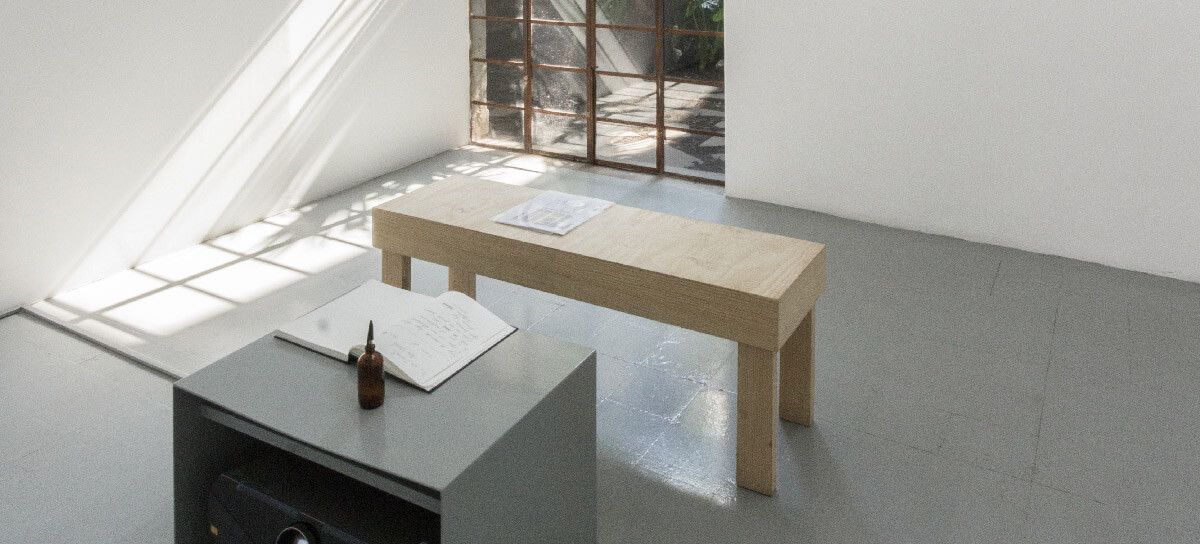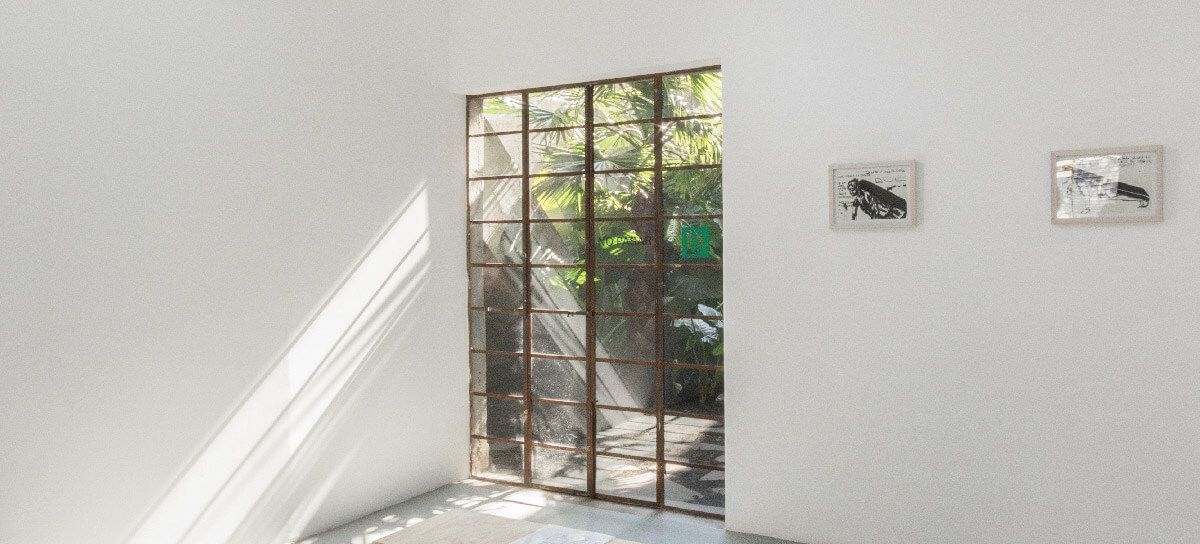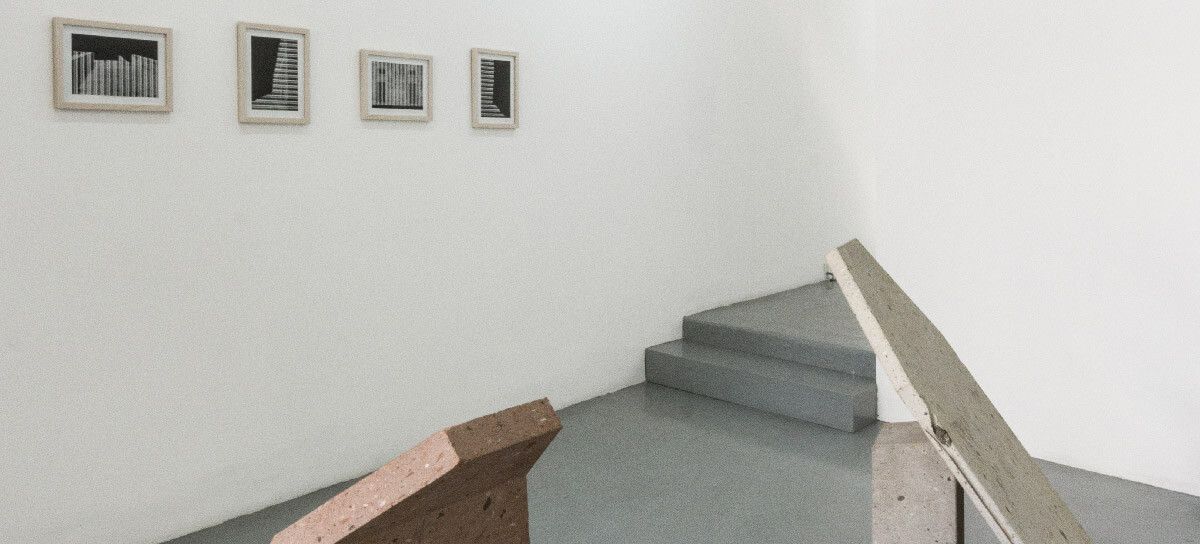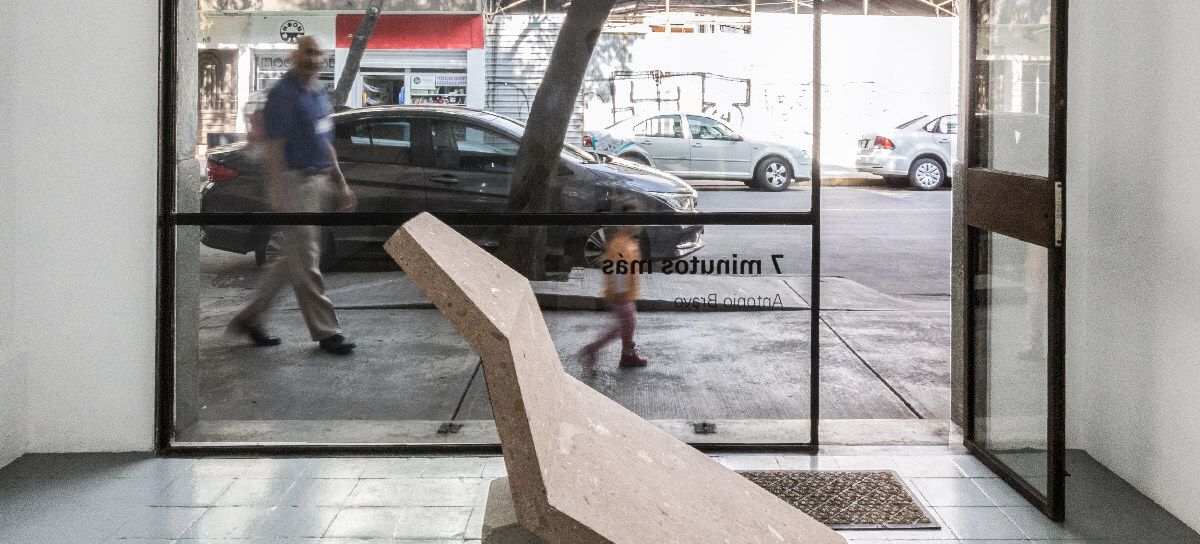7 minutos más
Antonio Bravo
2018
Antonio Bravo (State of Mexico, 1983) combines the theoretical and formal research of history and national anthropology with the personal experiences and processes from his family and the social context of his community, Villa Nicolás Romero in the State of Mexico. Each of the “studios” (as the artist defines his work projects) are composed of a series of drawings, performative actions, photographs and video.
The exhibition “7 minutes more“ addresses Bravo´s analysis of the image of Juan José de los Reyes Martínez Amaro, better known as El Pípila and his acting in a key event in the history of Mexican independence, the taking of the Alhóndiga de Granaditas. Notable figure in the construction of the history of independent Mexico, the Pípila fought in the army of Miguel Hidalgo being commonly shown as the effigy that carried a stone slab on his back to protect himself from the crossfire and thus be able to set fire to the door of the Alhóndiga where the grains were kept during the dry season.
Focused on the analysis of the different profiles and characteristics of the stone slab represented through national monuments and pictorial resources of the historical fact, Bravo questions the myths that have been created around the important characters in the construction of the identity of the nation. Ahínco is a sculptural installation formed by two quarry shields, with the function of protecting the dorsal part of the body. The shape and weight of each of the pieces were determined after carefully studying the multiple images of the slab, represented in the various drawings and collages on the walls Pípila y Alhondiga , thus reinforcing the use of historical myths as political resources, control or with the objective of generating a series of educational discourses for the national collective like with Esfuerzo Cargar 1 and 2.
Consequently, the video that titles the exhibition shows the experimentation to which the artist´s body is subjected to load, for a little over 7 minutes, stone slabs distributed in the dorsal part of the body. This action is based on the version of the historians Julio Zárate and Vicente Rivas Palacio, in which it is suggested that he had to wait 7 minutes loading the stone slabs before the Alhóndiga door could be lit.
The exhibition “7 minutes more“ addresses Bravo´s analysis of the image of Juan José de los Reyes Martínez Amaro, better known as El Pípila and his acting in a key event in the history of Mexican independence, the taking of the Alhóndiga de Granaditas. Notable figure in the construction of the history of independent Mexico, the Pípila fought in the army of Miguel Hidalgo being commonly shown as the effigy that carried a stone slab on his back to protect himself from the crossfire and thus be able to set fire to the door of the Alhóndiga where the grains were kept during the dry season.
Focused on the analysis of the different profiles and characteristics of the stone slab represented through national monuments and pictorial resources of the historical fact, Bravo questions the myths that have been created around the important characters in the construction of the identity of the nation. Ahínco is a sculptural installation formed by two quarry shields, with the function of protecting the dorsal part of the body. The shape and weight of each of the pieces were determined after carefully studying the multiple images of the slab, represented in the various drawings and collages on the walls Pípila y Alhondiga , thus reinforcing the use of historical myths as political resources, control or with the objective of generating a series of educational discourses for the national collective like with Esfuerzo Cargar 1 and 2.
Consequently, the video that titles the exhibition shows the experimentation to which the artist´s body is subjected to load, for a little over 7 minutes, stone slabs distributed in the dorsal part of the body. This action is based on the version of the historians Julio Zárate and Vicente Rivas Palacio, in which it is suggested that he had to wait 7 minutes loading the stone slabs before the Alhóndiga door could be lit.

